Holy smoke, Snowfiends. They really know how to make snow in the Italian Dolomites.
I’ve just been skiing at the Ski Centre Latemar above the Val di Fiemme. It sits between the medieval towns of Cavalese and Moena, and is one of several fast and painstakingly-groomed ski areas in the valleys of the west of the Sella Ronda. On offer are 48km of pistes, several plunging blacks, a well-shaped terrain park and…snow.
Lots of snow. On every piste there’s a steady, even layer of the white stuff at least half a metre deep. Thanks to the mild weather in the Alps at the moment, it’s firm in the mornings, and getting softer as the day progresses: but yesterday, these spring-like conditions weren’t especially pronounced and I had a cracking day’s skiing. Given how little natural snowfall there’s been in the Dolomites this winter, it felt miraculous.
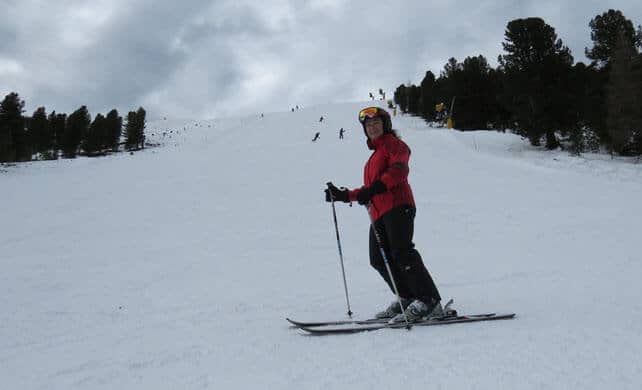
Thing is, the snow on the slopes here is almost 100% man-made, and nowhere did I experience the loose sugary surface you used to find beneath snow cannons: or that rock-hard, icy sheen when man-made snow gets too densely-packed. Nor was there any decline in quality over the steepest sections of its black runs, which usually defeat the best efforts of the snow-makers.
Yes, okay, fresh, natural snow, newly-groomed into a piste is still better than this was. But there was nothing to distinguish it from pistes all over the Alps yesterday – which this week have been going through a process of daytime melting and overnight refreezing.
“This stuff’s amazing,” I said to my guide Nadia Delvai. “How come?” And she explained that the Ski Centre Latemar regularly wins awards from German website skiresort.info for the quality of its grooming and its snow-making. Last winter, Josef Gummerer, who’s in charge of the runs at Ski Centre Latemar, was also named “Artificial Snow Expert of the Year.”
Josef Gummerer: I salute you.
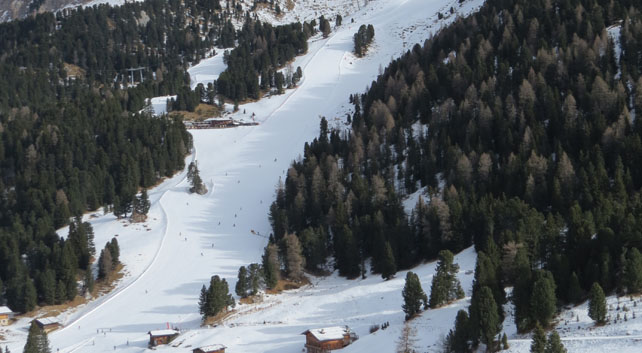
Right, back to the regular snow report.
Across the Alps, the mild spell continues
There’s a dusting of snow in the forecast for the northern Alps tonight and tomorrow, and temperatures will drop back slightly when it comes. There’s likely to be some snow at altitude on Sunday, too – focused on the northern resorts of Switzerland, and the Arlberg in Austria. But generally temperatures will stay mild for the time of year. There’s going to be rain for a time below about 1700m in the west.
Thanks to this mild spell, the snowpack across the northern Alps has changed dramatically since the cold snowstorms of mid-January. Below about 3000m on south-facing slopes, and 2200m on north-facing ones it’s going through a daily process of melting and overnight refreezing, and conditions are either crusty, or wet and heavy, depending on the time of day.
If you’re looking for powder, you need to hire a guide to take you to the highest, shadiest, and coldest slopes. In the east, you also need to pay particular attention to the avalanche risk. It’s still rated 3/5 in many resorts in the Tirol in Austria, thanks to poorly-bonded layers in the snowpack.
Meanwhile, the pistes are almost all perfectly skiable – provided you take account of the daytime process of melting and overnight refreezing. Give the slopes a little time to warm up in the morning if you don’t like them hard-packed, and avoid the low sunny runs after midday when they’ll be slushy. The French Alps, western and northern Switzerland and the Arlberg in Austria have the deepest natural cover, and in the Dolomites ski resorts are heavily dependent on snow-making crews for their snow. But as I discovered yesterday in the Val di Fiemme, that’s not necessarily a bad thing.
Looking ahead to next week, it’s likely to stay mild for a few days – but some mid-range forecasts are currently suggesting a cold and snowy spell around December 8. Let’s hope they’re right.
Here’s a quick squizz at the morning webcams, starting with Val d’Isere, where the snow is currently 97-178cm. The avalanche risk is currently 2/5.
Meanwhile, below is a taste of the magnificent view from the Mont Fort in Verbier, where the snow is 20-160cm deep, and the avalanche risk is 2/5.
Pictured below is St Anton, where the cover on-piste is 65-135cm deep, on-piste. The avalanche risk is 3/5 – so still considerable.
And here’s one of the pistes on at Andalo, on the edge of the Brenta Dolomites in Italy, where I’m about to go skiing today. Note the snow-cannons…
Meanwhile, in North America…
It’s been a busy season, weather-wise in the western resorts of America, and another snowy spell is on the way, starting in California on Friday. It’s going to start warm, with rain almost to the top of the mountains in the Tahoe area – but it will cool rapidly on Friday night and bring 12-40cm of snow across the region. The storm will then move inland, and is likely to drop 30-60cm of snow across both Utah and Colorado.
Further north, in Canada, Whistler is going through an unpleasant mild spell, with rain on the upper slopes as well as lower down. However it will be cooling down as the day progresses, and on the very highest slopes there could be nearly half a metre of snow.
And finally, just to finish here’s an absolutely gorgeous photo from Lake Louise, in Banff National Park, taken at the weekend, when they’d just had a top-up of snow. Says it all, really…
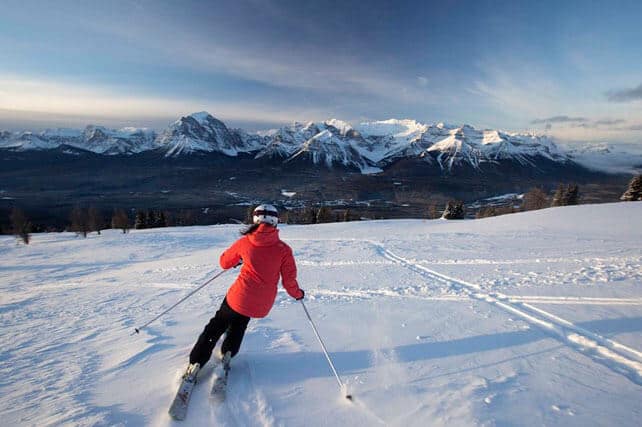
| France: there’s plenty of snow in the French Alps, but in the spring-like conditions the snow cover is beginning to thin on the lowest slopes – and the light rain expected tonight and tomorrow won’t help. You need to ski high and north-facing snow to find wintry conditions now. Otherwise spring-skiing tactics are the order of the day, although it is a bit cooler now than earlier in the week. Currently, Tignes, has 97-178cm of settled cover, on-piste, and Chamonix 125-225cm on Flegere. | |
| Switzerland: conditions across the northern and western resorts of Switzerland are quite similar to the northern resorts of France: the snow’s deep but it’s quality has been compromised by the mild spell, especially off piste. Stay high and north-facing if you want to find powder. Currently, Verbier, reports 20-160cm of cover, on piste, and Engelberg 80-310cm. | |
| Austria: Austria didn’t get as much snow from the early-January storms as France and western Switzerland, although resorts in the Arlberg such as Lech, were an exception. Now the milder weather has created spring conditions over all but the highest slopes. Currently, the Skiwelt has 50-70cm of cover, and St Anton 65-135cm. | |
| Italy: still the watchword is “more snow please” in the Italian Alps, although the snow-making crews have done a sterling job of compensating for Mother Nature’s shortfall. Currently, high-altitude Cervinia reports 50-180cm of settled snow. In Canazei in the Dolomites it’s 20-60cm deep. | |
| Andorra: the Pyrenees didn’t get as much snow in the first half of January as the north-western Alps, and conditions here are spring-like, too. In Andorra, Pas de la Casa has up to 70cm of snow packed down, on-piste. | |
| Western USA: see our main report. Conditions are good across the Rocky-Mountain resorts right now, although it’s a little mild in the sunshine. All eyes are on the coming snowstorms expected this weekend. Currently, in Colorado, Breckenridge reports 132cm of mid-mountain snow, in Utah Snowbird has 203cm, and in California Heavenly has 185cm. | |
| Western Canada: Whistler could do with lower temperature, which fortunately are forecast for the weekend. Currently, the mid-mountain snowpack is 198cm deep. In Banff National Park, Lake Louise has had a little fresh snow this week, but would like more. The mid-mountain snowpack is 93cm deep. |










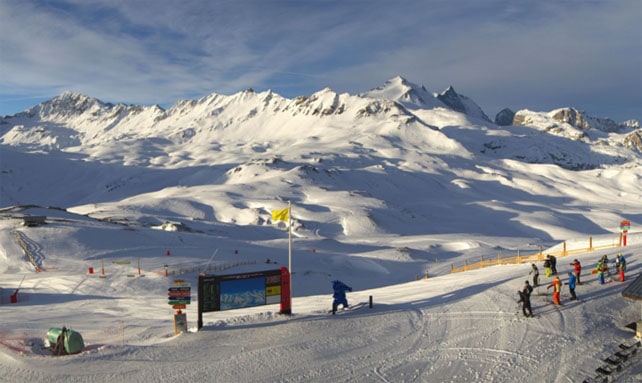
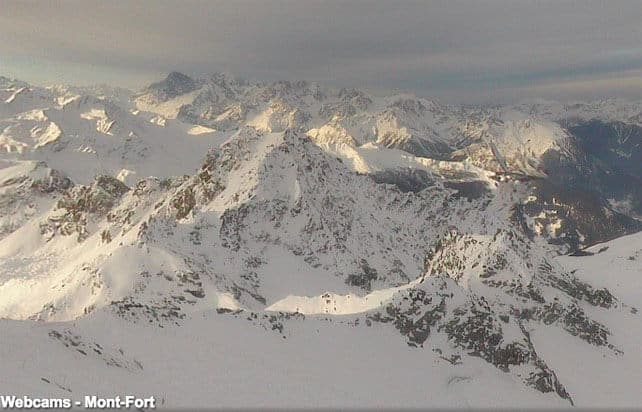
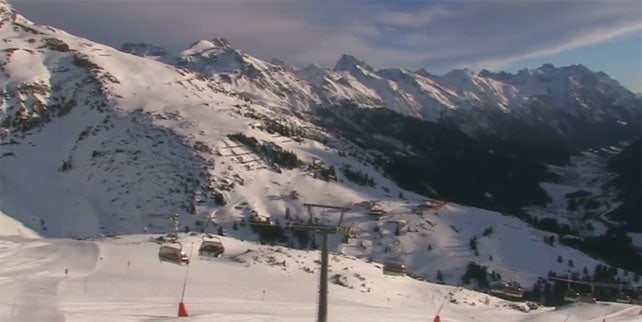
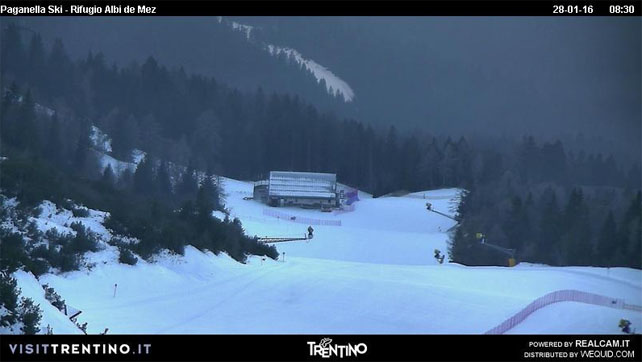
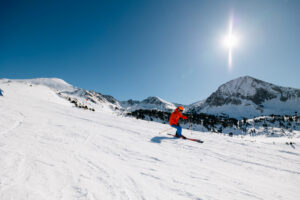
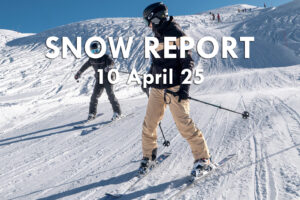

Great that you’ve pin-pointed this Sean! I’ve always said that because the Dolomites don’t always get great snow, they’ve had to learn how to make the best man-made snow. In the old days it was the USA who produced the best man-made snow but in my opinion the Dolomites have overtaken the USA (long ago) in the quality of their snowmaking and it’s well worth flagging this up, as you have done!
I agree, Arnie. They’re the masters of the art. I remember having a great day out in a snowless January above San Cassiano a few years back, but back then it was cold, too, so snow-making was (relatively speaking) a doddle. This time round, we’ve had yo-yoing temperatures and still the snow was deep and even across all the pistes.
I’ve just got back from a week in Champoluc and Pila. Off piste was non-existent but the man made pistes were excellent. Even at the end of the day there was only a bit of slush at the bottom of the home runs. Hats off to the Italians. From past experience in Lets Gets, Morzine and Morillon, it would have been pretty depressing in France whereas we managed long distances and good skiing every day.
Thanks for letting us know about conditions in the Aosta Valley too, Bill! I’m glad you managed to get in lots of turns…